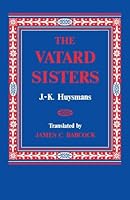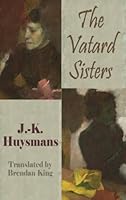- Welcome to FictionDB, Guest
- | My Account
- | Help

The Vatard Sisters — Joris-Karl Huysmans / J.K. Huysmans
buy the book from amazon
Paperback editions:
Hardcover editions:
eBook editions:
Audio editions:
Large Print editions:
Browse Similar Books at Amazon
Literature & Fiction->Literary
Literature & Fiction->Classics
Kindle Store->Kindle eBooks->Literature & Fiction->Contemporary Fiction->Literary
Kindle Store->Kindle eBooks->Literature & Fiction->Literary Fiction->Classics
Description
In it, Huysmans vividly depicts the scene that for his generation of French writers stood for the contemporary world: the brutal, teeming life of the industrial quarters of Paris in the 1870s.
Huysmans' Vatard sisters are "Désirée, an urchin of fifteen, a brunette with large, pale eyes that were somewhat crossed, plump without being fat, attractive and clean; and Céline, the carouser, a big girl with clear eyes and hair the color of straw, a solid, vigorous girl whose blood raced and danced in her veins." The two are part of that "bizarre race of young women" who work as bookbinders, whose lives revolve around the gaslighted bindery works, the gaudy shop windows, and cheap wineshops that Huysmans describes with minute and colorful detail. His precisely observed sketches show that Naturalism as practiced by Buysmans had none of Zola' s emphasis on "scientific" determinism, but centered primarily on the faithful rendering of what he described as "living persons in real milieus."
The Vatard Sisters is the first English translation of Les Soeurs Vatard.
CERTAIN CONTENT THAT APPEARS ON THIS PAGE COMES FROM AMAZON. THIS CONTENT IS PROVIDED ‘AS IS’ AND IS SUBJECT TO CHANGE OR REMOVAL AT ANY TIME.



 Amazon UK
Amazon UK